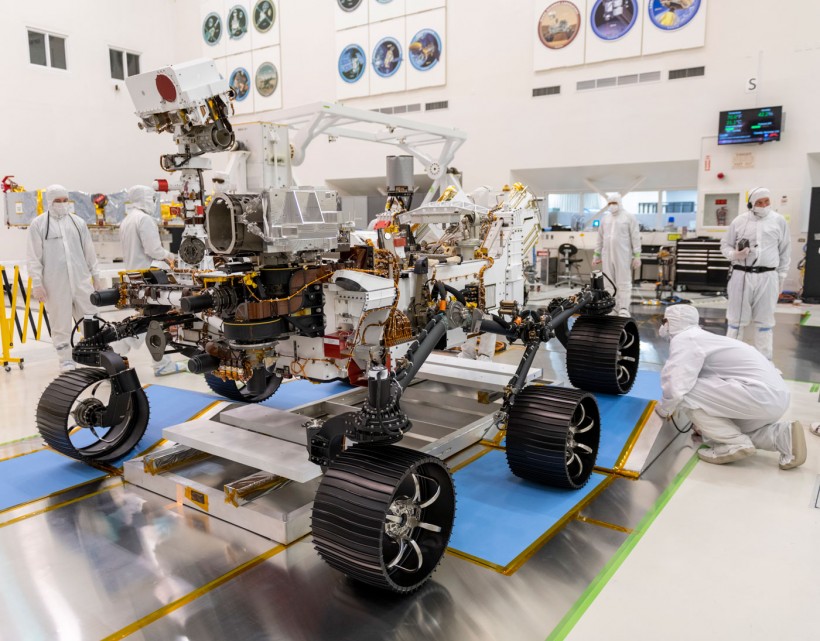The National Aeronautics and Space Administration ended the decade with the unveiling the Mars 2020 rover which is scheduled to set off to Mars. The spacecraft is designed to find traces of ancient life and pave the way for human expeditions on the Red Planet
In an invitation-only press showcase last Friday, NASA provided everyone with a first look at the spacecraft. Mars 2020 rover was developed in the agency's Jet Propulsion Laboratory in Pasadena, California and is scheduled to be launched July of this year. If successful in reaching Mars, the Mars 2020 rover will be the fifth man-made tech developed by the agency to land on the Red Planet. In the showcase, deputy mission leader Matt Wallace explained that the primary goal of Mars 2020 rover is to find signs of life on the planet. To be able to do this, engineers designed the rover to be capable of carrying different instruments that can help scientists in understanding the geological and chemical context of the Red Planet.
THE MOST AMBITIOUS MISSION TO DATE
The instruments that were installed in the rover are 23 sets of cameras, two antennae-like equipment that will serve as its ears listening to Martian winds, and a set of lasers for chemical analysis. Mars 2020 rover's size is approximately similar to a car's and built with six wheels for traversing the rocky Martian terrain. However, the Mars 2020 rover is relatively slow and it's okay since it is only required to cover 200 yards per Martian day.
The engine won't be much of a problem for the Mars 2020 rover as it is fuelled by a miniature nuclear reactor. In order to get samples from the terrain, the engineers at the Jet Propulsion Laboratory attached seven-foot-long articulated arms and a drill for the rover to be able to crack samples obtained from various locations which could be potentially suitable for life.
"What we're looking for is an ancient microbial life. We're talking about billions of years ago on Mars when the planet was much more Earth-like," Wallace explained. According to previous analysis from the data brought by the twin spacecraft Spirit and Opportunity, Mars had a warm surface and water was definitely present. Around the planet were a thicker atmosphere and a magnetic force. Wallace notes this condition could have given way to microbial life on the planet.
After successfully harvesting samples from the Red Planet, the Mars 2020 rover will put it in hermetically sealed tubes and be left on the surface until a future mission can transport it back to our planet. Wallace hopes for the mission to move quickly as they are planning to launch a follow-up mission by 2026. This mission will involve sending a spacecraft to pick-up the discarded samples and propel them to Mars' orbit which will then reach Earth around ten years, at best.
The Mars 2020 rover will land on the dried-up Jezero crater which was hypothesized by scientists as a location that can have traces of ancient life; after all, Jezero crater was once a 500-yard-deep lake. The crater was connected to an ancient network of rivers that were flowing on the planet 3 million years ago.
One of the most ambitious targets of the Mars 2020 mission is to make way for human missions on the Red Planet. "I think of it, really, as the first human precursor mission to Mars," Wallace narrates. He also explained that the equipment built within the rover will allow scientists to make oxygen not only to allow humans to breathe but also fuel the departure from the planet.
READ: Jezero Crater Hosts Rich Amounts of Hydrated Silica-a Mineral Perfect for Preserving Biosignatures














![Earth's Quasi-Moon Kamo‘oalewa Could Originate From Lunar Surface Not Asteroid Belt [Study]](https://1721181113.rsc.cdn77.org/data/thumbs/full/53275/258/146/50/40/earths-quasi-moon-kamo-oalewa-could-originate-from-lunar-surface-not-asteroid-belt-study.png)
